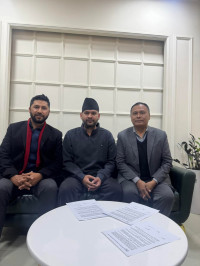Opinion
Gendercide
Nepal needs serious advocacy against sex-selective abortion to put an end to it
Geha Nath Khanal
Abortion services were legalised in Nepal in September 2002 after much research, advocacy and lobbying at the local, national and international by organisations working in the field of human rights, law and public health. Prior to the legalisation of abortion in the country, it was only permitted if the mother’s life was at risk. Even so, unsafe abortions were rampant accounting for nearly 50 percent of maternal deaths. Existing laws allows voluntary abortion up to 12 weeks; up to 18 weeks if the pregnancy is caused by rape or incest; at any gestational period if pregnancy is harmful to the expecting mother’s physical or mental health and if the foetus has deformity. All the cases of abortion need to be certified by an expert physician and the sex-selective abortion is strictly prohibited.
Sex selective abortion prevails
While every couple desires a small family, some prefer to have at least one or more male child. This preference for a son is because society considers men to be bread earners and for the continuation of the lineage and will take care of the parents in illness and old age. Furthermore, socio-cultural factors like the dowry system and the high cost of female marriage also result in son preference, and sex-selective abortion is only a means to achieve this desired outcome. Increased sex-determination and abortion is a result of multiple loopholes in the existing policy such as the provision of allowing physicians to terminate pregnancy of any gestational period if the pregnancy is harmful to the health of the mother and foetus. This gives unethical physicians an opportunity to misuse this policy by preparing fake certified reports and committing the illegal act for money.
Although it is illegal to terminate a pregnancy as a consequence of sex-identification, recent birth trend—less girl child in comparison to boy child—clearly demonstrates that it is still being practiced in Nepal. British researcher Melanie Dawn Frost and her colleagues in their research titled ‘Falling sex ratios and emerging evidence of sex-selective abortion in Nepal 2013’ argue that there has been a substantial increase in sex-selective abortion since 2002. Their study shows that there were 742 girls per 1000 boys between 2007 and 2010, which had declined dramatically from 1021 girls per 1000 boys in 1998-2000. This study clearly depicts the increasing termination of female foetus in the country after the legalisation of abortion. Moreover, due to weak monitoring mechanism and loopholes in the policy neither the health workers nor the service consumers have to face legal action. Cases such as the recent decision taken by the Nepal Medical Council (NMC) to suspend a female gynecologist for allegedly conducting sex-determination tests during pregnancy and motivating a couple to abort a child, is extremely rare.
Instances of sex-selective abortion have also increased in other countries like India, China, Vietnam and South Korea the legalisation of abortion. And the common policy adopted by these countries to address this issue is through prosecution and monetary fines. However, except in South Korea, such policies have not been effective. The reasons behind the Korean success are strict law enforcement such as suspending the license of the physician performing sex-determination and public awareness
campaigns.
There are various arguments regarding policy options to address this issue of sex-determination and abortion. Some argue that illegal ultrasound services should be banned. But this is not a logical option because doing so will only further marginalise women living in rural areas as they do not have proper access to services. Furthermore, the services provided by the private sector in remote parts of the country, where the government services have not reached, cannot be underestimated.
Medical ethics
It is high time we advocated against sex-selective abortion similar to the advocacy for the legalisation of abortion. The preference for a boy child will exist unless daughters prove to be equally capable. But for that to happen, girls need to be provided with equal opportunities as boys. Easy access to education, employment and other opportunities helps to minimise social stigma and discrimination against daughters. The national literacy rate of male, 75 percent, compared to female, 58 percent, clearly indicates educational inequalities. Education cannot only break the underlying stigma and cultural taboos associated with sex-selective abortion, but it can also bring positive results in education, health and economic opportunities.
Additionally, medical ethics is crucial to minimise sex-selective abortion. But the cost of studying medicine is so high in Nepal that the doctors are constantly motivated to earn money to overcome their investment. Therefore, many of them resort to unethical medical practices. Hence, the NMC should strengthen its role in identifying medical practioners involved in sex-determination and the termination of female foetuses and help address this problem.
Khanal is a student of Masters of Public Health at the University of Melbourne




 8.12°C Kathmandu
8.12°C Kathmandu










%20(1).jpg&w=300&height=200)

